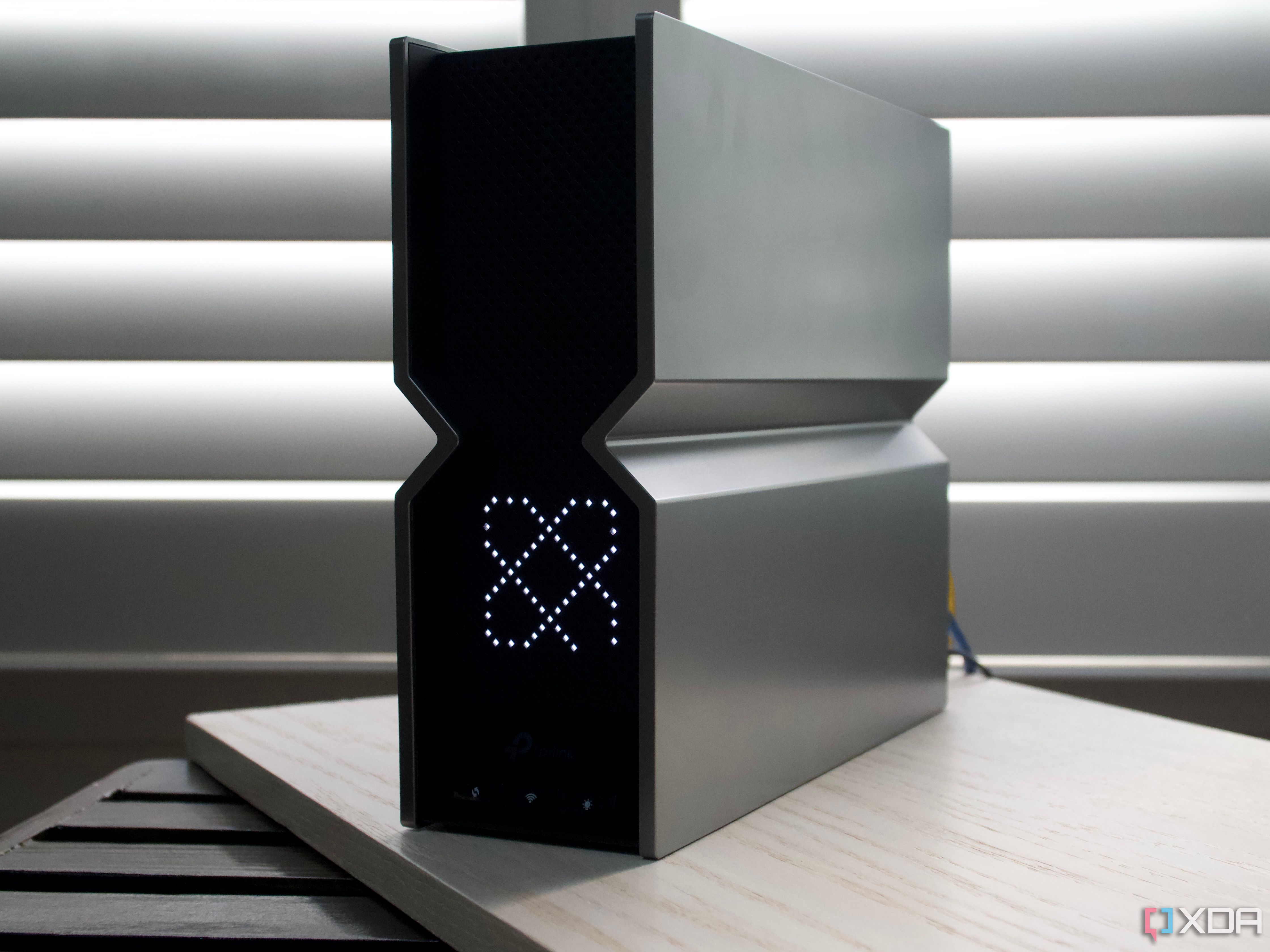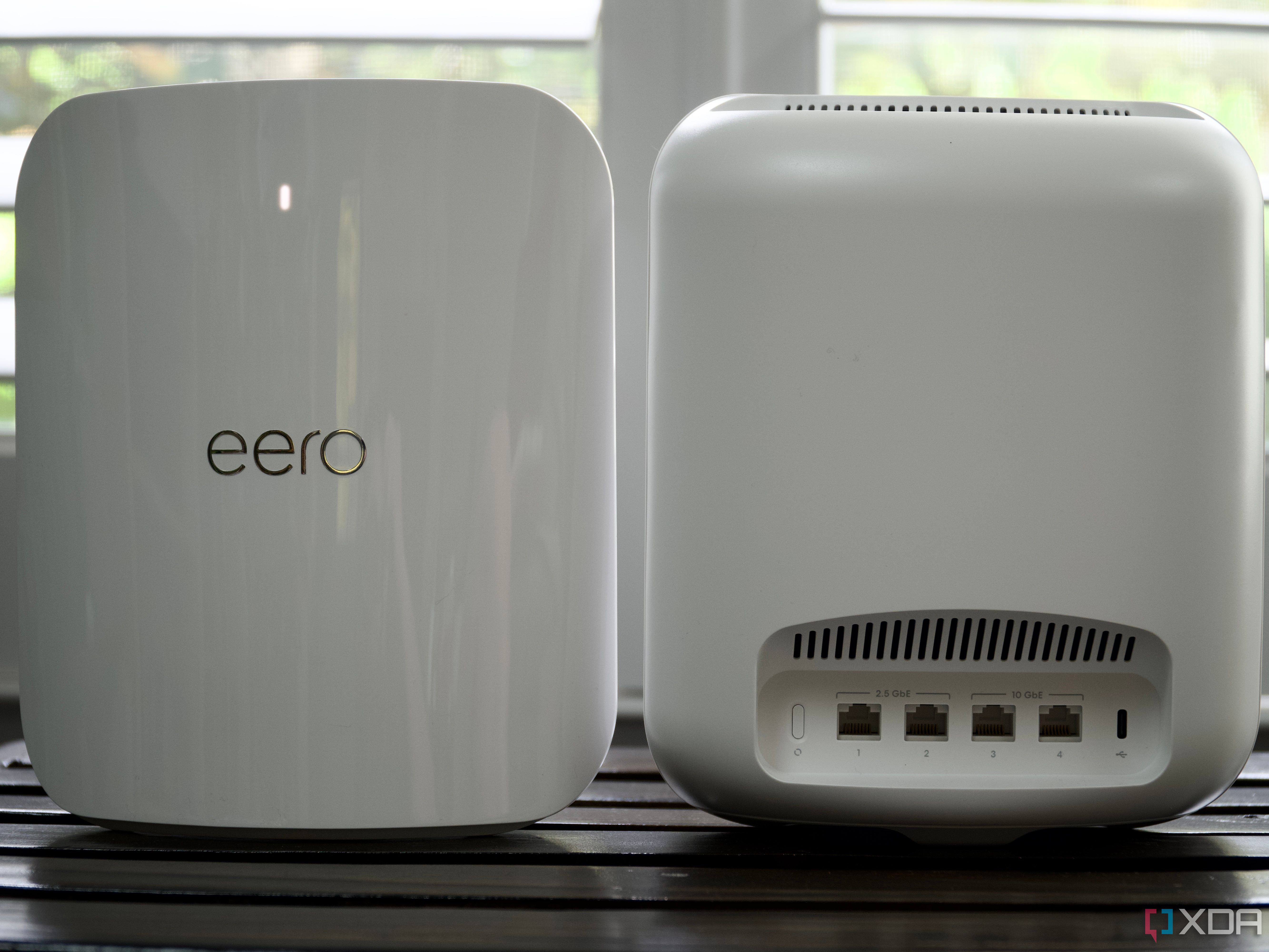Wi-Fi 7 routers are finally here. The speeds are incredible, but the prices can get steep. Wi-Fi 7 increases capacity over Wi-Fi 6 by making better use of the 6GHz spectrum available in many countries. The fastest Wi-Fi 7 routers have one or more 320MHz wide bands at 6GHz, which is double what was possible on Wi-Fi 6. While multi-gig internet speeds aren't yet available to most people, fast Ethernet makes these routers a good choice for someone who shares large files between devices at home.
While Wi-Fi 7 is rare, you can already find it on Android phones like the OnePlus 12. Even so, some of the best gaming laptops (such as the Lenovo Legion 9i) come with Wi-Fi 6E that can take advantage of the 6GHz spectrum, even if speeds are limited to Wi-Fi 6. But what are the best Wi-Fi 7 routers that are worth buying in 2024? Let's take a look.
Get the fastest Wi-Fi speeds with Wi-Fi 7
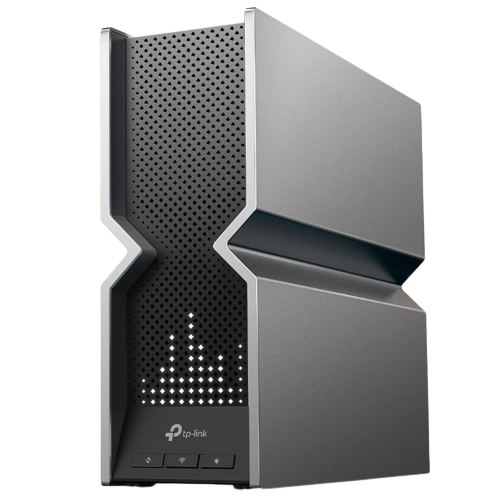
TP-Link Archer BE800
All of the speed you need
The Archer BE800 from TP-Link is a tri-band Wi-Fi 7 router with speeds up to BE19000. It is also ready for multi-gig wired connections with two 10Gbps ports and four 2.5Gbps ports. This router even supports EasyMesh if you want to expand your coverage later.
- Fast tri-band BE19000 connection
- SFP+ available for one of the 10Gbps ports
- EasyMesh expansion ready
- Cheap-feeling plastics on the housing
- The display isn?t that useful
The TP-Link Archer BE800 was one of the first Wi-Fi 7 routers released, but it feels like one of the most complete. TP-Link has left gigabit Ethernet in the past with two 10Gbps Ethernet ports and four 2.5Gbps ports, which is perfect for a house with multiple online gamers. Notably, one of the 10Gbps ports can be used with either RJ45 Ethernet or fiber-optic-compatible SFP+. On the wireless side, the tri-band BE19000 connection breaks down to 1376Mbps at 2.4GHz, 5760Mbps at 5GHz, and 11520Mbps at 6GHz. It’s worth noting that you can use Multi-Link Operation (MLO) on some Wi-Fi 7 devices to use both bands at once.
This router has eight internal antennas, which provide a strong signal. In our review, we noticed that coverage was strong, with impressive 5GHz and 6GHz speeds on Wi-Fi 7. If you still need more coverage, EasyMesh expansion is supported, so you can add another BE800 or a cheaper compatible router.
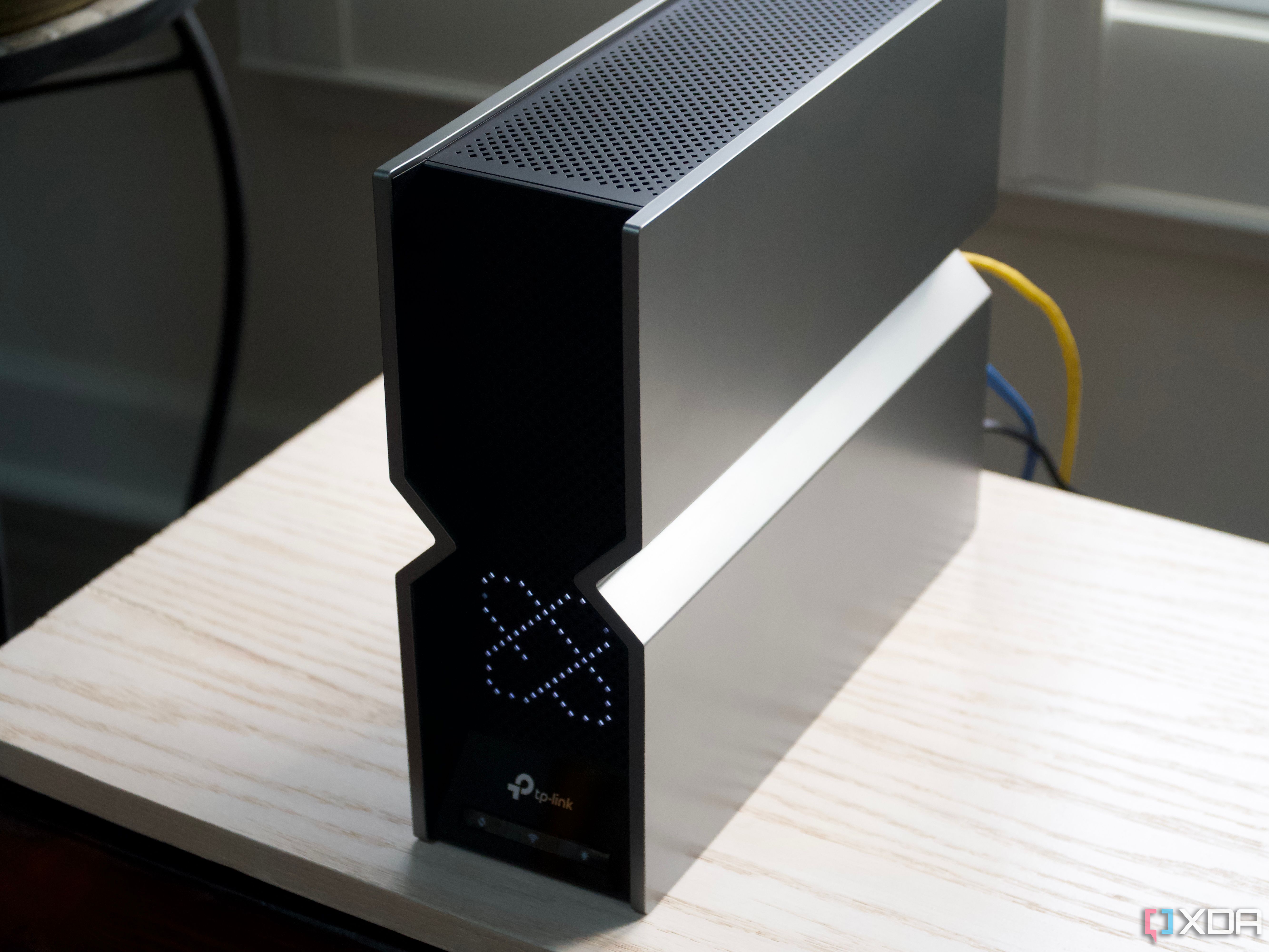
TP-Link Archer BE800 Wi-Fi 7 router review: It doesn’t get much better than this
The Archer BE800 is one of the first Wi-Fi 7 routers to market with a tri-band BE19000 connection and 10Gbps Ethernet.Like most Archer routers, the best bet for first-time setup is the Tether app. You can also connect to the router using a web browser to access more advanced settings. With its relatively low price, the TP-Link Archer BE800 is a great router for trying out Wi-Fi 7.
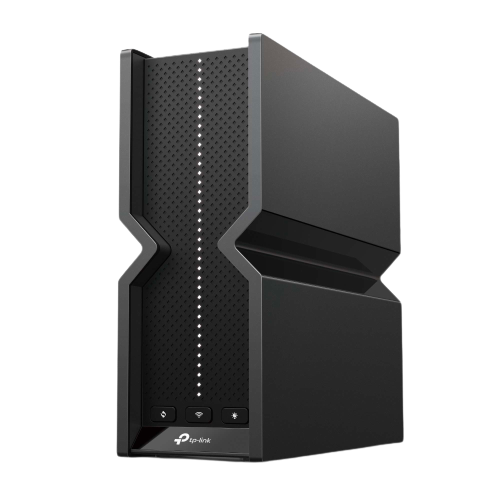
TP-Link Archer BE550
Plenty for most people
Looking to try out Wi-Fi 7 without spending a fortune? The TP-Link Archer BE550 is a more sensible BE9300 tri-band router that still has plenty of speed for multi-gig internet connections. Despite its lower speeds, it still has nice Wi-Fi 7 tech like 4K-QAM, MLO, and 320MHz support.
- One of the cheapest ways to try Wi-Fi 7
- All Ethernet ports are 2.5Gbps
- EasyMesh expansion support
- Speeds at 5GHz may not hold up to a busy network
- It?s a bit large
While many router manufacturers pursue the fastest speeds possible, TP-Link kept things modest with the Archer BE550. This router is by no means slow with a tri-band BE9300 connection. This setup is a little top-heavy, with 5760Mbps at 6GHz, 2880Mbps at 5GHz, and 574Mbps at 2.4GHz. If you have a lot of data-hungry 5GHz devices in your house, that 5GHz capacity could be a limiting factor, but if you're moving as much of your tech over to 6GHz as possible, there's plenty of bandwidth. The 2.4GHz band uses Wi-Fi 6.
You also get five 2.5Gbps wired Ethernet ports. If you have internet speeds over 1Gbps or high-speed network storage, this router can handle it. Compared to the above Archer BE800, the internal antennas are reduced to six, and there's no front display. The housing is largely the same, however, even though the materials feel a bit cheaper.
This router is best set up using the TP-Link Tether app, but you can also access the settings using a web browser. TP-Link's HomeShield software includes solid free parental controls, but more advanced features (like more advanced parental controls and DDoS protection) are available for those willing to subscribe and pay.
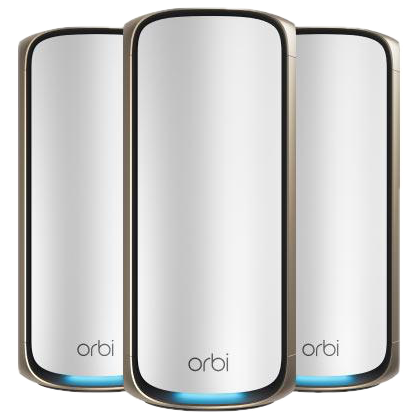
Netgear Orbi RBE973S
Ultra-fast mesh speeds
The quad-band Orbi RBE973S is a three-piece mesh with a ton of speed, and clever design. It has dual 10Gbps Ethernet ports plus four 2.5Gbps Ethernet ports on the back of the main router. With a quick BE27000 connection and a dedicated backhaul, this is one of the fastest mesh kits you can get.
- Ultra-fast BE27000 connection
- Dedicated 5GHz mesh backhaul
- 10Gbps Ethernet on every node
- Very expensive
- No SFP+ connector
- The Orbi app feels a bit dated
The Netgear Orbi RBE973S is a three-pack mesh kit with a primary router and two satellites. It provides Wi-Fi 7 speeds of BE27000. This throughput breaks down to 1147Mbps at 2.4GHz, 5765Mbps at 5GHz, and 11530Mbps at 6GHz. There's another 8647Mbps of capacity at 5GHz as a dedicated backhaul, which connects the mesh nodes.
Orbi mesh systems utilize a primary router and satellite nodes. The router and nodes all support BE27000 speeds, but the router has more wired connections: two 10Gbps Ethernet ports and four 2.5Gbps Ethernet ports. On the satellites, you get a single 10Gbps Ethernet port and two 2.5Gbps ports. This is plenty of wired connectivity for most people.
Netgear estimates up to 3,300 square feet of coverage out of each node and 10,000 square feet with a three-pack. In reality, it will be a bit less due to walls, furniture, and other obstacles to wireless signals. You can add more satellites as needed, but they're pricey at $900 each.
Netgear makes setup easy using the Orbi app. Most settings are also available via web browser if you prefer. However, you'll need to use the app for Netgear Armor. Armor is a subscription service that comes with tools to help keep your network secure. Unfortunately, that doesn't include the full suite of parental controls, with Smart Parental Controls costing extra.
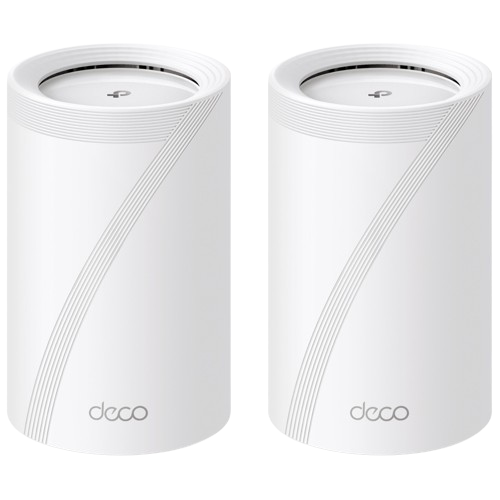
TP-Link Deco BE63
Make it a mesh
For the next few years at least, most of us don’t need speeds much higher than 1Gbps on a couple of devices. The Deco BE63 from TP-Link has a fairly speedy BE10000 connection with features like 4K-WAM, 320MHz bands, and MLO intact. With four 2.5Gbps Ethernet ports on each node, this is a very capable system for the price.
- Quick BE10000 tri-band wireless speeds
- Four 2.5Gbps Ethernet ports on every node
- Mesh expansion with any Deco
- The 2.4GHz band is only Wi-fi 6
- No 10Gbps Ethernet
The TP-Link Deco BE63 is similar to previous Deco generations. TP-Link practiced restraint with the BE10000 wireless connection breaking down to 5188Mbps at 6GHz, 4324Mbps at 5GHz, and 574Mbps at 2.4GHz. Like the Archer BE550, the 2.4GHz band sticks with Wi-Fi 6, which is fast enough for your 2.4GHz tech. Still, with a capable Wi-Fi 7 device, you have plenty of bandwidth for any residential high-speed service.
If you’re looking at a 10Gbps plan, pick a more capable router; but if your internet speeds are 2.5Gbps or less, the Deco BE63 is a solid pick. Each node sports four 2.5Gbps Ethernet ports for wired devices. You can also use Ethernet to link nodes with a wired backhaul, which Deco’s software will use with wireless capacity for a more robust mesh.
This mesh is set up and managed using the Deco app, not a web browser. This may be annoying for some, but the average user will love the simple and intuitive app interface. HomeShield includes some free parental control options like content filtering, but if you want the complete package with features like time scheduling and more in-depth reports, you’ll need to subscribe.
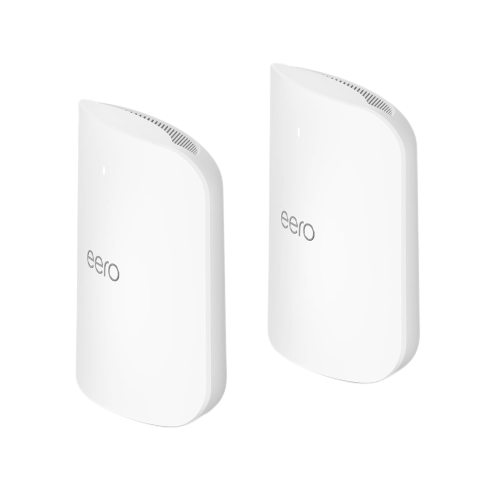
Eero Max 7
Easy to configure, even for novice users
This tri-band BE20800 mesh router has a lovely design and plenty of power for heavy users. It has two 10Gbps Ethernet ports and two 2.5Gbps Ethernet ports on each node and works with other Eero and Eero built-in devices.
- Attractive design with dual 10Gbps Ethernet ports
- Fast BE20800 tri-band connection
- Mesh expansion with all other Eeros
- Few advanced features
- Quite expensive
- No web browser controls
The Eero Max 7 is one of Amazon's best mesh routers to date. Despite the cooling demands of Wi-Fi 7, the Eero Max 7 stays cool without fans, so it's dead silent. The router's BE20800 wireless bandwidth breaks down to 574Mbps at 2.4GHz, 8647Mbps at 5GHz, and 11530 at 6GHz. Here again, the 2.4GHz band uses Wi-Fi 6 instead of Wi-Fi 7.
On the back of each router, two 10Gbps Ethernet ports and two 2.5Gbps Ethernet ports are available for your incoming connection or to connect devices. There is a USB-C port, but it's only for power, so there's no support for USB storage.
One thing that was clear when we tested this Eero was how easy the system was to set up and use. The Eero app may feel too simple to advanced users, but if you don’t want to spend more than a few minutes setting up your network, the app makes that possible. While most others like Asus, Netgear, and TP-Link have more feature-rich apps, Eero’s layout makes it easy to find what you’re looking for.
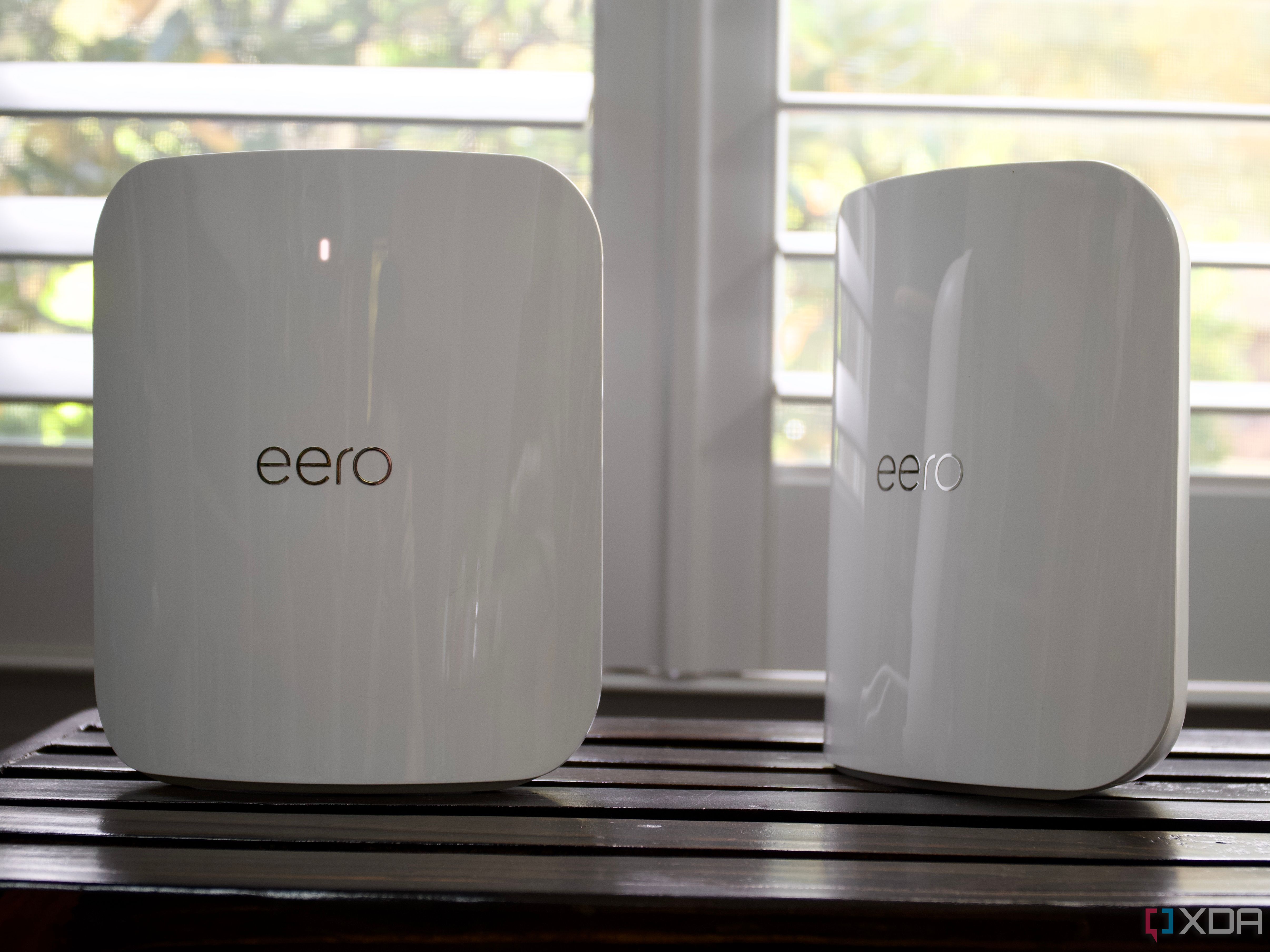
Eero Max 7 review: Eero's simplicity elevates Wi-Fi 7's appeal
Eero Max 7 is a powerful Wi-fi 7 mesh system with more speed than most people can use and multi-gig network support.The availability of Eero Plus could be positive or negative, with some features (that seem like they should be free) locked behind a paywall. A few paywalled features include ad blockage, content filters, and historical data retrieval. On the bright side, for $9.99 per month or $99.99 per year, Eero Plus also gives you VIP support, internet backup, advanced security, Guardian VPN, Malwarebytes, and 1Password.
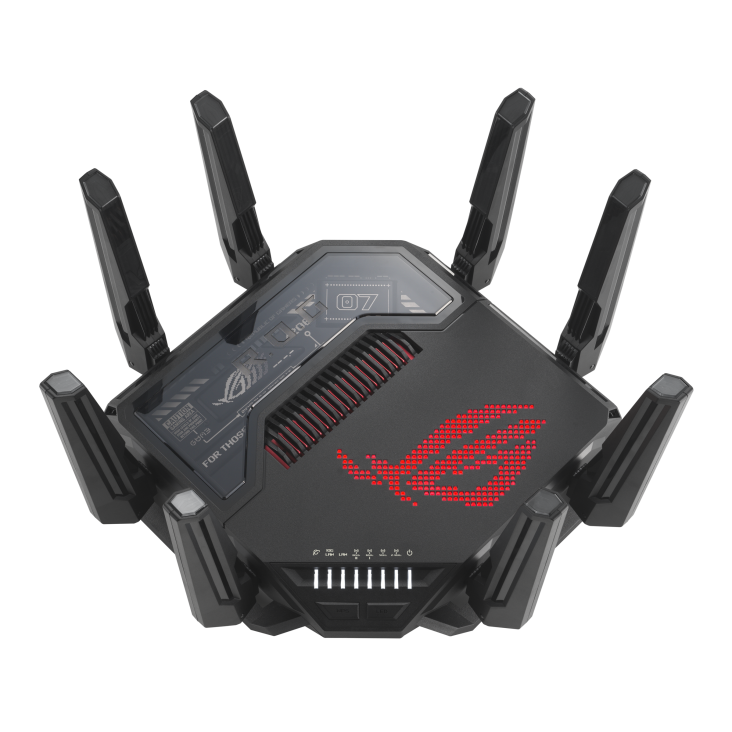
ROG Rapture GT-BE98 Pro
No compromises
This high-end quad-band Wi-Fi 7 router features dual 6GHz bands for a total capacity of BE30000. It’s ready for multi-gig Ethernet connection with two 10Gbps ports, four 2.5Gbps ports, and a single gigabit port. One of the 10Gbps ports is marked for gaming, and any device plugged into it is automatically prioritized.
- Ultra-fast BE30000 quad-band speeds
- Plenty of multi-gig wired support
- Asus software allows you to change advanced settings in a web browser
- Very expensive for a single router
- Dual 6GHz bands won?t make sense for many
- Design lacks a single shred of subtlety
While the ROG Rapture GT-BE98 Pro router's design won't be to everyone's taste, its performance will be. The incredible BE30000 Wi-Fi 7 throughput offers two 6GHz bands running at 11529Mbps. With up to 5764Mbps at 5GHz and 1376Mbps at 2.4GHz, this is one of the fastest routers you can get if you can take advantage of it. While Wi-Fi 6E devices have been around for a while and Wi-Fi 7 is becoming more available, many devices still use 5GHz. For most people, a lot of the speed of this router will go unused.
One way to use the second 6GHz band is as a dedicated backhaul for a mesh system with other Asus Wi-Fi 7 routers. This could be with another Rapture GT-BE98 Pro or another 6GHz-capable Asus router using AiMesh technology. If you don't want to use Wi-Fi for gaming, you have two 10Gbps Ethernet ports, four 2.5Gbps Ethernet ports, and a single gigabit port.
As expected of an ROG product, this router looks wild. It has a prominent RGB logo that you can adjust via the app. A vent also covers up a bright red heat sink that keeps the components cool. This router is undoubtedly effective if you want to cultivate a "gaming room" aesthetic.
You can set up this ROG router with the companion app, which offers a simple installation process and some of the most thorough settings of any router app. Asus also lets you access many advanced settings via web browser. There are also simpler settings, such as the ability to open NAT ports by searching for the name of a game. Finally, Asus includes AiProtection Pro, which offers robust parental controls and free Trend Micro internet security.
Improve your network speeds with Wi-Fi 7
In 2024, most of us don’t need all the speed that Wi-Fi 7 offers and would be fine with one of the best Wi-Fi routers with Wi-Fi 6 or Wi-Fi 6E. Wi-Fi 7 offers some serious speed improvements, especially in congested areas, and provides future-proofing. However, which Wi-Fi 7 router to buy comes down to your needs and budget.

TP-Link Archer BE800
The Archer BE800 from TP-Link is a tri-band Wi-Fi 7 router with speeds up to BE19000. This router is also ready for multi-gig wired connections with two 10Gbps ports and four 2.5Gbps ports. This router even supports EasyMesh if you want to expand your coverage later on.
Overall, the TP-Link Archer BE800 makes the most sense for people looking for Wi-Fi 7 performance without wasting money for speeds they can't use. This router is blazing-fast with a tri-band BE19000 connection with dual 10Gbps wired ports. With EasyMesh compatibility, you can even improve your coverage later on. Plus, it has a sleek futuristic look which would enhance any space.

